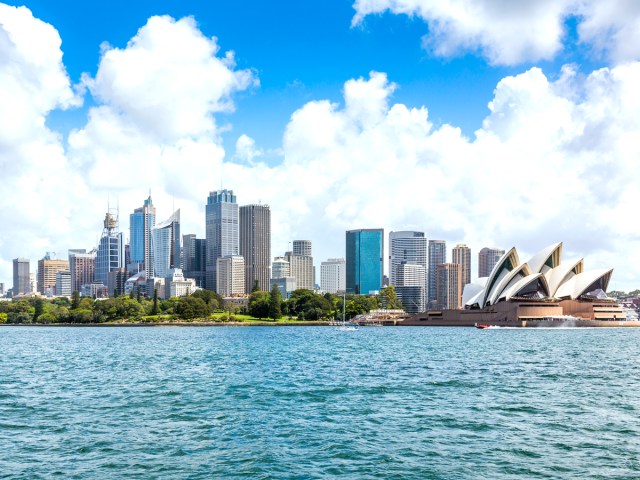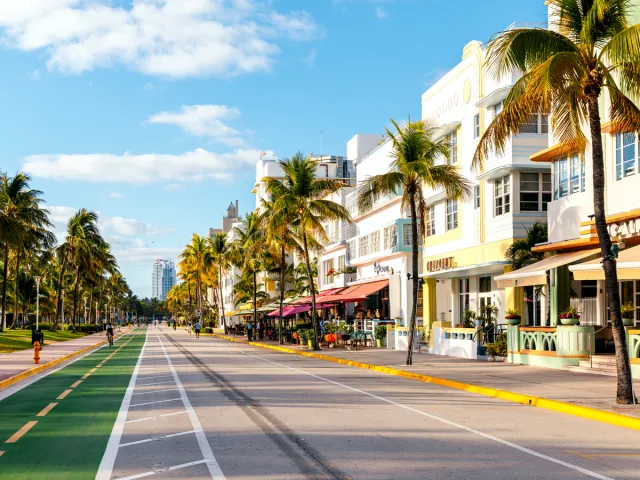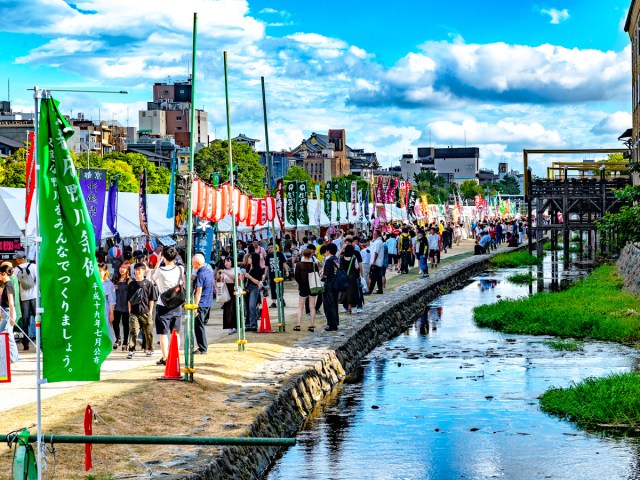A city might be the sum of its parts, but at first glance, the skyline defines it. Visible from all angles, urban skylines are not only symbolic, but also reveal crucial details about a city’s history and culture. From London to New York City to Dubai, here are six of the most famous city skylines and a guide to the landmarks that make them memorable.
London, United Kingdom

London’s skyline is defined by a mixture of grand, historic structures and soaring modern skyscrapers. A fixture of the skyline since the late 1800s, London’s Tower Bridge has allowed citizens to cross the River Thames for over a century. The Victorian Gothic suspension bridge even remained operational during the Blitz in World War II and continues to be one of the most popular sights in the city today.
More modern landmarks include the Gherkin, a distinctive building named for being shaped like a pickle — and a reference that displays the Brits’ penchant for dry humor. Within the same eyeline, the Shard is a 95-story pinnacle-shaped tower that is home to the highest habitable floor in the city (floor 72). And of course, the London Eye is unmissable — the 135-foot observation wheel, originally a temporary fixture for London’s millennium celebration in 2000, provides some of the best panoramic views of the city.
New York, New York

As the first city in the world to fully embrace the skyscraper, the Big Apple’s skyline is home to numerous “supertall” buildings and many historic masterpieces. Of these historic buildings, the most recognizable is the Empire State Building, an art deco skyscraper completed in 1930 that is often considered a symbol of the city itself. Finished the same year, the Chrysler Building is another art deco skyscraper that was briefly the tallest building in the world before the Empire State Building claimed the title.
The skyline’s modern landmarks include One World Trade Center, currently the tallest building in the Western Hemisphere. With a symbolic height of 1,776 feet, the building replaced the Twin Towers that were destroyed in the September 11 attacks and serves as a memorial for the many lives lost. Another new addition, completed in 2019, is 30 Hudson Yards. As the second-tallest building in the city, 30 Hudson Yards is home to New York’s highest observation deck, making it the perfect place to take in the legendary skyline.
Dubai, United Arab Emirates

In the past 30 years, Dubai has undergone a rapid transformation that has resulted in one of the most modern and innovative skylines in the world. The city is now home to several world-famous landmarks, including the Burj Khalifa. Completed in 2010, it remains the tallest skyscraper in the world, with a distinctive needle spire that stretches to an astounding 2,717 feet tall.
Several other buildings also define Dubai’s extraordinary skyline. Cayan Tower’s unique design showcases a twisted exterior that allows for panoramic views from inside the building, while the Dubai Mall features an asymmetrical glass exterior that surrounds a central atrium. Also notable are the Emirates Towers, two complementary skyscrapers with contrasting angles that mimic each other.
Toronto, Canada

As a city celebrated for its diversity and love of the arts, Toronto is also heralded for its unique skyline along Lake Ontario. Dominating the city’s skyline is the CN Tower, a spire-shaped concrete communications and observation tower that rises to 1,815 feet. Until 2007, it was the world’s tallest freestanding structure, and today it continues to offer unparalleled views of the city from its observation decks. Situated at the base of CN Tower is the Rogers Centre, a stadium with a retractable roof that hosts the Toronto Blue Jays and large-scale concerts.
Another distinctive landmark is Toronto City Hall, also known as “New City Hall,” which was designed by functionalist Finnish architect Viljo Revell. It features a (somewhat divisive) modernist style, with a pair of curved towers that house the offices of the mayor and city councillors. Queen Elizabeth II attended its opening in 1965.
Sydney, Australia

Sydney has one of the most recognizable skylines in the world, thanks in no small part to the Sydney Opera House. Set against the backdrop of Darling Harbor, the UNESCO World Heritage Site has a memorable sail-like shape that has served as a symbol for both the city and the country since it was completed in 1973.
The city’s tallest structure, Sydney Tower Eye, is another easily recognizable building. Home to a unique golden crown that doubles as an observation deck, it provides panoramic views of the surrounding area from over 1,000 feet above ground. Meanwhile, the Quay Quarter Tower has become a recent star of the skyline. Rather than demolishing the old AMPTower that once stood in its place, architects repurposed 95% of that building’s original material, resulting in a modern, upcycled skyscraper that reaches 617 feet tall.
Rio de Janeiro, Brazil

Rio de Janeiro undoubtedly has one of the most beautiful skylines in the world, but unlike other cities, it is not one dominated by skyscrapers. Instead, the city’s most iconic landmarks come from the natural world. Built upon the stunning Guanabara Bay, one of the Seven Natural Wonders of the World, Rio is lined by the world-famous Copacabana and Ipanema beaches and surrounded by the Tijuca Forest, the world’s largest urban forest.
Perhaps the skyline’s most distinctive landmark is Sugarloaf Mountain, with a 1,299-foot summit that can be accessed via cable car. Translating to “hunchback” in Portuguese, Corcovado Mountain is another uniquely shaped pinnacle that hovers over the city. It’s home to the colossal 1922 statue known as Christ the Redeemer, named one of the New Seven Wonders of the World.
More from our network
Daily Passport is part of Inbox Studio, which publishes content that uplifts, informs, and inspires.






















